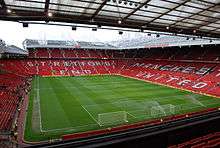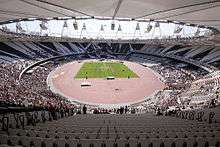Venues of the 2012 Summer Olympics and Paralympics
The 2012 Summer Olympics and Paralympics venues were mostly located in the host city of London, though some other events required facilities located elsewhere. Between the successful bid and the Olympics and Paralympics themselves, several details and venues changed.
| Part of a series on |
|
Sporting venues
The 2012 Games used a mixture of newly built venues, existing facilities and temporary facilities, some of them in well known locations such as Hyde Park and Horse Guards Parade. In the wake of the problems that plagued the Millennium Dome, the intention was that there would be no white elephants after the games. Some of the facilities are being reused in their Olympic form, while others were constructed so that they could either be reduced in size or moved elsewhere in the UK. The plans were intended to contribute to the regeneration of Stratford in east London which is the site of the Olympic Park and of the neighbouring Lower Lea Valley.
The venues within Greater London were divided into three zones: the Olympic Zone, the River Zone and the Central Zone. In addition to these were venues that, by necessity, are outside the boundaries of Greater London.
Naming
The IOC has a number of major blue-chip sponsors for the Olympics, who are entitled to have their name exclusively associated with the event. As a consequence, any other company that provided sponsorship was not permitted to use its name or branding during the games, which includes as part of the name of any venue. Thus, three Olympic venues were temporarily renamed for the duration of the Games:
- The O2 Arena – North Greenwich Arena
- Sports Direct Arena – St James' Park
- The Ricoh Arena – City of Coventry Stadium
Olympic Park Zone
The Olympic Zone encompassed all of the facilities within the 500 acres (2 km2) Olympic Park in Stratford. This park was developed on existing waste and industrial land, and is seven minutes by Olympic Javelin train from central London. The park contained in the following below:
| Venue | Permanent/ Temporary |
Sports | Capacity | Ref. | |
|---|---|---|---|---|---|
| Olympics | Paralympics | ||||
| Aquatics Centre | Permanent | Diving, Modern Pentathlon (swimming), Swimming, Synchronized Swimming | Swimming | 17,500 | [1][2] |
| Basketball Arena | Temporary | Basketball, Handball (medal round) | Wheelchair Rugby, Wheelchair Basketball | 12,000 | [2][3] |
| BMX Track | Permanent1 | Cycling (BMX) | — | 6,000 | [4] |
| Eton Manor | Permanent | — | Wheelchair Tennis | 10,500 | [2][5] |
| Copper Box | Permanent | Handball, Modern Pentathlon (fencing) | Goalball | 7,000 | [2][6] |
| Velodrome | Permanent1 | Cycling (track) | Cycling (track) | 6,000 | [2][7] |
| Riverbank Arena | Temporary2 | Field Hockey | Football seven-a-side, Football five-a-side | 16,000 | [2][8] |
| Olympic Stadium | Permanent | Athletics, Ceremonies (opening/closing) | Athletics, Ceremonies (opening/closing) | 80,000 | [2][9] |
| Water Polo Arena | Temporary | Water polo | — | 5,000 | [2][10] |
1: - As part of Lee Valley VeloPark
2: - Hockey facilities moved to Eton Manor
- The Olympic Village, with accommodation for all athletes and team officials (some 17,320 beds in total). After the games the village will become a district of the Stratford City development, a multibillion-pound development project on the former railway goods yard to the east of the Olympic Park. (Accredited technical officials — referees, umpires, etc. — are housed in hotel space in London Docklands).
- The Olympic Press and Broadcast Centres.
- Park Live
The original plan called for the construction of five new indoor arenas, four in the Olympic Park, and one in the River Zone (see below). In order to save money this was reduced to two. The existing venues at Earls Court and Wembley Arena were added to the plans, and various sports were shuffled around to make this possible.
The construction of the Olympic Park itself commenced in 2006, with Murphy Group awarded the contract to remove the powerlines which crossed the site and move these into a tunnel to be dug beneath the site. Civil engineering companies Morrisons and Nuttalls were appointed to undertake the demolition and land remediation works, under the project management of WS Atkins. The pace of this speeded up with the closure of the roads crossing the Olympic Park in June 2007. The construction phase of the Olympic Park was managed by CLM, a consortium comprising CH2M Hill, Laing O'Rourke and Mace. This consortium is officially titled Delivery Partner, ODA. The earliest construction of venues commenced in April 2008 with the start of the main build on the Olympic Stadium by McAlpine, with the nearby energy centre to be constructed by EDF Energy. Work on the Aquatics Centre began later the same year. During the construction phase the workforce on-site is expected to peak at 9,000 operatives.
Accidents during construction of the venues resulted in no deaths - the only time this has happened in the history of Olympic construction.[11]
River Zone
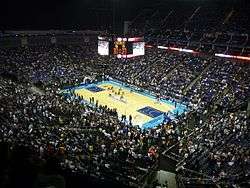
The River Zone features four main venues in the Thames Gateway area straddling the River Thames:
| Venue | Sports | Capacity | Ref. | |
|---|---|---|---|---|
| Olympics | Paralympics | |||
| ExCeL | Boxing, Fencing, Judo, Table Tennis, Taekwondo, Weightlifting, Wrestling | Boccia, Judo, Powerlifting, Table Tennis, Volleyball (sitting), Wheelchair Fencing | from 5,000 to 10,000 | [2][12] |
| Greenwich Park | Equestrian, Modern Pentathlon (riding, running, shooting) | Equestrian | 23,000 (OG) 6,000 (PG) |
[2][13] |
| North Greenwich Arena | Basketball (final), Gymnastics (artistic, trampolining) | Wheelchair basketball | 20,000 (OG) 18,000 (PG) |
[2][14] |
| Royal Artillery Barracks | Shooting | Archery, Shooting | 7,500 (OG) 5,000 (PG) |
[2][15] |
In the initial plan for the River Zone, a temporary 6,000 seat capacity facility to be called North Greenwich Arena 2 was to have been built alongside the O2 to host the badminton and rhythmic gymnastics events. However, the cost led to alternatives being suggested, eventually leading to the cancellation of the arena and the transfer of its planned events to Wembley Arena instead.[16]
Central Zone
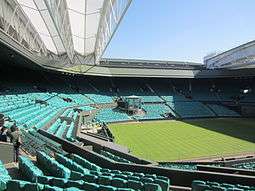
The Central Zone is formed out of all the remaining venues within Greater London. They are quite widely spread across central, west and south London:
| Venue | Sports | Capacity | Ref. | |
|---|---|---|---|---|
| Olympics | Paralympics | |||
| All England Lawn Tennis and Croquet Club | Tennis | — | 30,000 | [17] |
| Earls Court Exhibition Centre | Volleyball (indoor) | — | 15,000 | [18] |
| Horse Guards Parade | Volleyball (beach) | — | 15,000 | [19] |
| Hyde Park | Swimming (marathon), Triathlon | — | 3,000 | [20] |
| Lord's Cricket Ground | Archery | — | 6,500 | [20] |
| Marathon Course | Athletics (marathon and race walk) | Athletics (marathon) | Not listed. | [21] |
| Wembley Arena | Badminton, Gymnastics (rhythmic) | — | 6,000 | [22] |
| Wembley Stadium | Football | — | 90,000 | [23] |
Outside Greater London
Five of the venues are outside Greater London:
| Venue | Location | Sports | Capacity | Ref. | |
|---|---|---|---|---|---|
| Olympics | Paralympics | ||||
| Brands Hatch | Swanley, Kent | — | Cycling (road) | [24] | |
| Dorney Lake | Dorney, Buckinghamshire | Canoeing (sprint), Rowing | Rowing | 30,000 maximum (OG) 6,000 (PG) |
[2][25] |
| Hadleigh Farm | Hadleigh, Essex | Cycling (mountain biking) | — | 20,000 (includes 3,000 seating) | [26] |
| Lee Valley White Water Centre | Waltham Cross, Hertfordshire | Canoeing (slalom) | — | 12,000 maximum | [27] |
| Weymouth and Portland National Sailing Academy | Isle of Portland, Dorset | Sailing | Sailing | 4,600 (OG) 17,400 (PG) |
[2][28][29] |
Football stadiums
The earlier stages of the Olympic football competition were played at football stadia around the United Kingdom shown in the table below. As stated above, both football finals (men's and women's) were at the 90,000 seat Wembley Stadium:
| Venues | Location | Capacity | Ref. |
|---|---|---|---|
| City of Coventry Stadium | Coventry, England | 32,500 | [30] |
| Hampden Park | Glasgow, Scotland | 52,000 | [31] |
| Millennium Stadium | Cardiff, Wales | 74,600 | [32] |
| Old Trafford | Manchester, England | 76,000 | [33] |
| St James' Park | Newcastle upon Tyne, England | 52,409 | [34] |
Transport and infrastructure


Olympic Park Zone
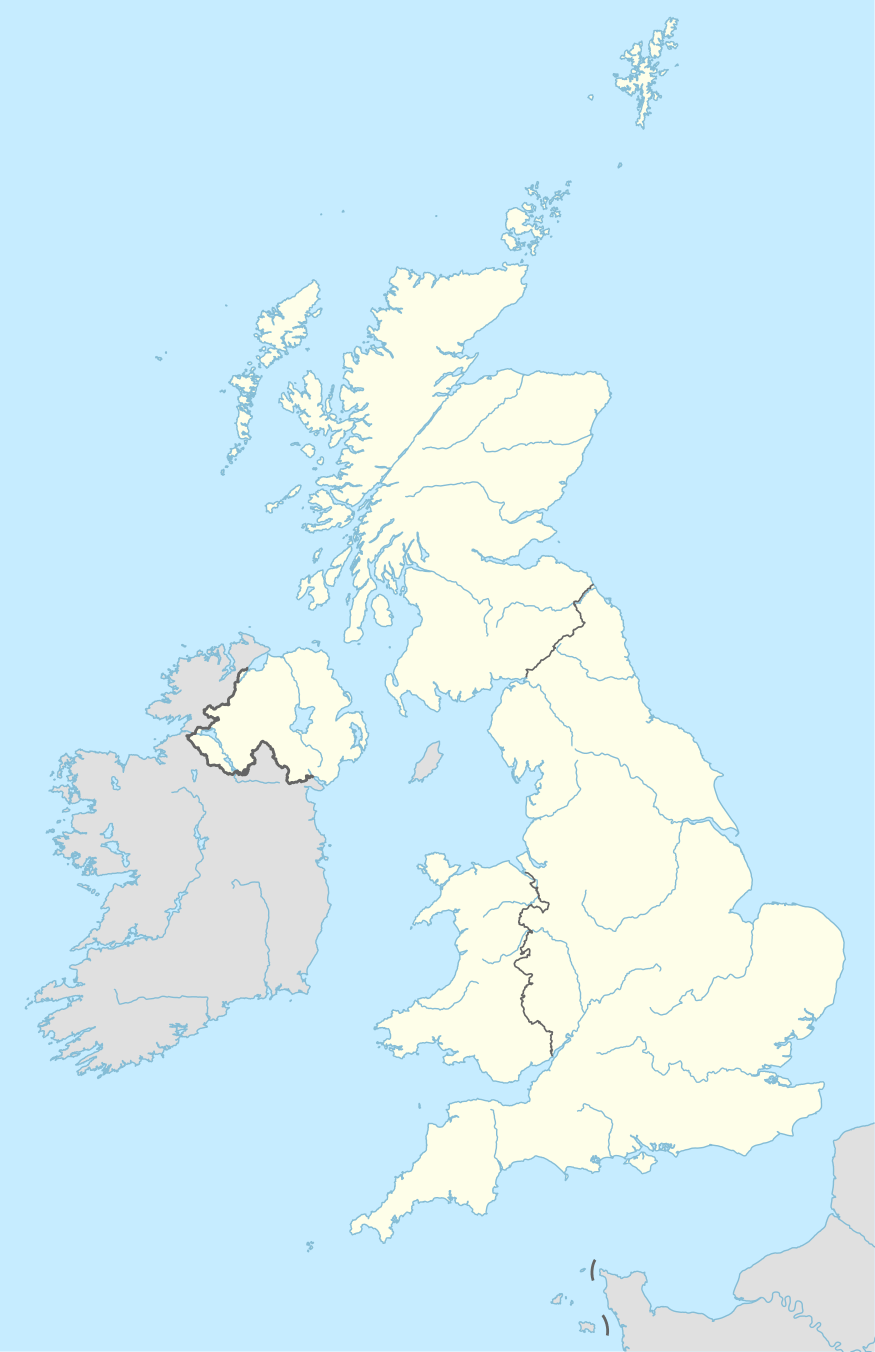
Public transport, an aspect of the bid which scored poorly in the IOC's initial evaluation, has seen numerous improvements, including the expansion of the East London Line, upgrades to the Docklands Light Railway and the North London Line, and the new Olympic Javelin service. It is almost impossible to assess how many of the proposed improvements would have happened in any case. The games were won without a commitment to deliver Crossrail by 2012. This is the largest transport project proposed for London, and it was widely assumed in the early stages of the bidding process that the games could not be won without a guarantee that it would be completed before the games.
During the games, 80% of athletes are within 20 minutes of their events and 97% are within 30 minutes of their events. Together, all the planned National Rail, light rail, and underground services (excluding Crossrail) are expected to deliver around 240 trains every hour.[35] Olympic volunteers and staff picked up their uniforms and accreditation at the Uniform Distribution and Accreditation Centre.
The Olympic and Paralympic village
Difficulties experienced by developers Lend Lease[36] in raising funds for the village (the single largest project in the 2012 scheme) resulted in the scale of the village being reduced by almost 25%.[37] This was achieved predominantly by providing accommodation for London-based athletes only. Those competing in events outside London were to be housed elsewhere. Following the athletes' experiences in Beijing 2008 (and in particular through comments concerning athletes' welfare by International Olympic Committee President Jacques Rogge) this compromise was to be reconsidered whilst pressure built for the finance deal to be resolved.[38]
Changes to the original bid
Regent's Park was planned to host the softball and baseball events, but the IOC chose not to run those events.
Windsor Park in Belfast, Northern Ireland, was included as a football venue in the IOC questionnaire submitted in 2004, but excluded in the final candidature file.
On 7 June 2006, a revised masterplan for the Olympic Park was announced. The most significant change was the relocation of the volleyball events from a new Olympic Arena to the existing venue of Earls Court, which is several miles to the west. The revision also involved the re-organisation of the park shuffling the Basketball, Cycling, Fencing, Tennis and Field hockey venues in addition to the Press and Broadcast Centre. This move was designed to remove the need for the relocation of 80 businesses and to provide a more coherent legacy for the sporting venues.
Another change was the relocation of the badminton and rhythmic gymnastics events to Wembley Arena in north-west London, instead of a proposed new venue near the North Greenwich Arena.
Two venues to be developed outside central London have been also relocated from the original bid sites. The Broxbourne canoe venue was marginally re-sited following the discovery (in October 2007) that the proposed Spitalbrook site was contaminated,[39] while in February 2008 the Weald Country Park was deemed insufficiently challenging for elite mountain biking. It was announced in August 2008 that the revised venue would be at Hadleigh Farm, also in Essex.
In August 2009, Villa Park was withdrawn from the list of venues for the football competition, due to uncertainty over Aston Villa's redevelopment plans for the stadium, and was replaced by the City of Coventry Stadium in Coventry.[40]
References
- London 2012 Olympics profile of the Aquatics Centre Archived 5 December 2012 at Archive.today Retrieved 31 July 2012.
- London 2012 daily competition schedule Archived 4 July 2011 at the Wayback Machine, Kent Sport Leisure and Olympics Service, Retrieved 11 January 2011
- London 2012 Olympics profile of the Basketball Arena Archived 16 December 2012 at Archive.today Retrieved 31 July 2012.
- London 2012 Olympics profile of the BMX Track Archived 6 December 2012 at Archive.today Retrieved 31 July 2012.
- London 2012 Paralympics profile of Eton Manor Archived 9 December 2012 at Archive.today Retrieved 31 July 2012.
- London 2012 Olympics profile of the Copper Box Archived 6 December 2012 at Archive.today Retrieved 31 July 2012.
- London 2012 Olympics profile of the London Velodrome Archived 9 December 2012 at Archive.today Retrieved 30 December 2010.
- London 2012 Olympics profile of the Riverbank Arena Archived 16 December 2012 at Archive.today Retrieved 31 July 2012.
- London 2012 Olympics profile of Olympic Stadium Archived 6 December 2012 at Archive.today Retrieved 31 July 2012.
- London 2012 Olympics profile of the Water Polo Arena Archived 9 December 2012 at Archive.today Retrieved 31 July 2012.
- "Exploring the Record-Breaking Health and Safety Performance of the 2012 Olympic Games".
- London2012.com profile of ExCeL. Archived 6 September 2012 at Archive.today Retrieved 30 December 2010.
- London2012.com profile of Greenwich Park. Archived 15 September 2010 at the Wayback Machine Retrieved 30 December 2010.
- London2012.com profile of the North Greenwich Arena Archived 1 January 2011 at the Wayback Machine Retrieved 30 December 2010.
- London2012.com profile of the Royal Artillery Barracks Archived 1 January 2011 at the Wayback Machine Retrieved 30 December 2010.
- Wembley Arena to host badminton & gymnastics in 2012 – BBC News, 26 May 2010
- London2012.com profile of Wimbledon (All England Lawn Tennis and Croquet Club. Archived 16 September 2010 at the Wayback Machine Retrieved 30 December 2010.
- London2012.com profile of Earls Court. Archived 2 October 2011 at the Wayback Machine Retrieved 30 December 2010.
- London2012.com profile of the Horse Guards Parade. Archived 15 September 2010 at the Wayback Machine Retrieved 30 December 2010.
- London2012.com profile of Hyde Park. Archived 31 December 2010 at the Wayback Machine Retrieved 30 December 2010.
- "London Landmarks To Star in Olympic Marathon Spectacular" Archived 7 June 2011 at the Wayback Machine 17 November 2004 London2012.com article Retrieved 30 December 2010.
- London2012.com profile of Wembley Arena. Archived 7 September 2011 at the Wayback Machine Retrieved 30 December 2010.
- London2012.com profile of Wembley Stadium. Archived 14 September 2010 at the Wayback Machine Retrieved 30 December 2010.
- London 2012 announces Brands Hatch as Paralympic Road Cycling venue. Archived 6 August 2011 at the Wayback Machine Retrieved 20 May 2011
- London2012.com profile of Dorney Lake (Eton Dorney). Archived 30 November 2009 at the Wayback Machine Retrieved 30 December 2010.
- London2012.com profile of Hadleigh Farm, Essex. Archived 5 December 2012 at Archive.today Retrieved 30 December 2010.
- London2012.com profile of Lee Valley White Water Centre. Archived 1 January 2011 at the Wayback Machine Retrieved 30 December 2010.
- London2012.com profile of Weymouth and Portland. Archived 1 January 2011 at the Wayback Machine Retrieved 30 December 2010.
- Dorset for you – Olympic Sailing Ticket Holders. Archived 11 August 2011 at the Wayback Machine Retrieved 21 March 2012.]
- London2012.com profile of City of Coventry Stadium. Archived 19 August 2010 at the Wayback Machine Retrieved 30 December 2010.
- London2012.com profile of Hamden Park. Archived 10 August 2011 at the Wayback Machine Retrieved 30 December 2010.
- London2012.com profile of Millennium Stadium. Archived 1 January 2011 at the Wayback Machine Retrieved 30 December 2010.
- London2012.com profile of Old Trafford. Archived 1 January 2011 at the Wayback Machine Retrieved 30 December 2010.
- London2012.com profile of St. James' Park. Archived 13 July 2011 at the Wayback Machine Retrieved 30 December 2010.
- AlwaysTouchout.com (2005). Olympics. Retrieved 27 November 2005
- London 2012 Games village deal seen by year-end Reuters Accessed 8 October 2008
- London 2012 Olympic village funding to be settled by end of 2008 following reduction in scale Associated Press Released 11 July 2008
- 2012 Games will be under budget BBC News Retrieved 31 August 2008
- New Canoeing venue in Broxbourne confirmed for the London 2012 Olympic Games Archived 20 July 2008 at the Wayback Machine London2012.com Press Release, 16 April 2008
- "Villa Park pulled out of Olympics". BBC News. 10 August 2009. Retrieved 10 August 2009.
External links
- Olympic Park venues at London 2012
- View the Olympic Park on Google Maps
- Olympic And Paralympic Venues in London – accessibility at Inclusive London
- 2012 London Olympic Venue Ticket Prices at CoolInfographics
.jpg)
